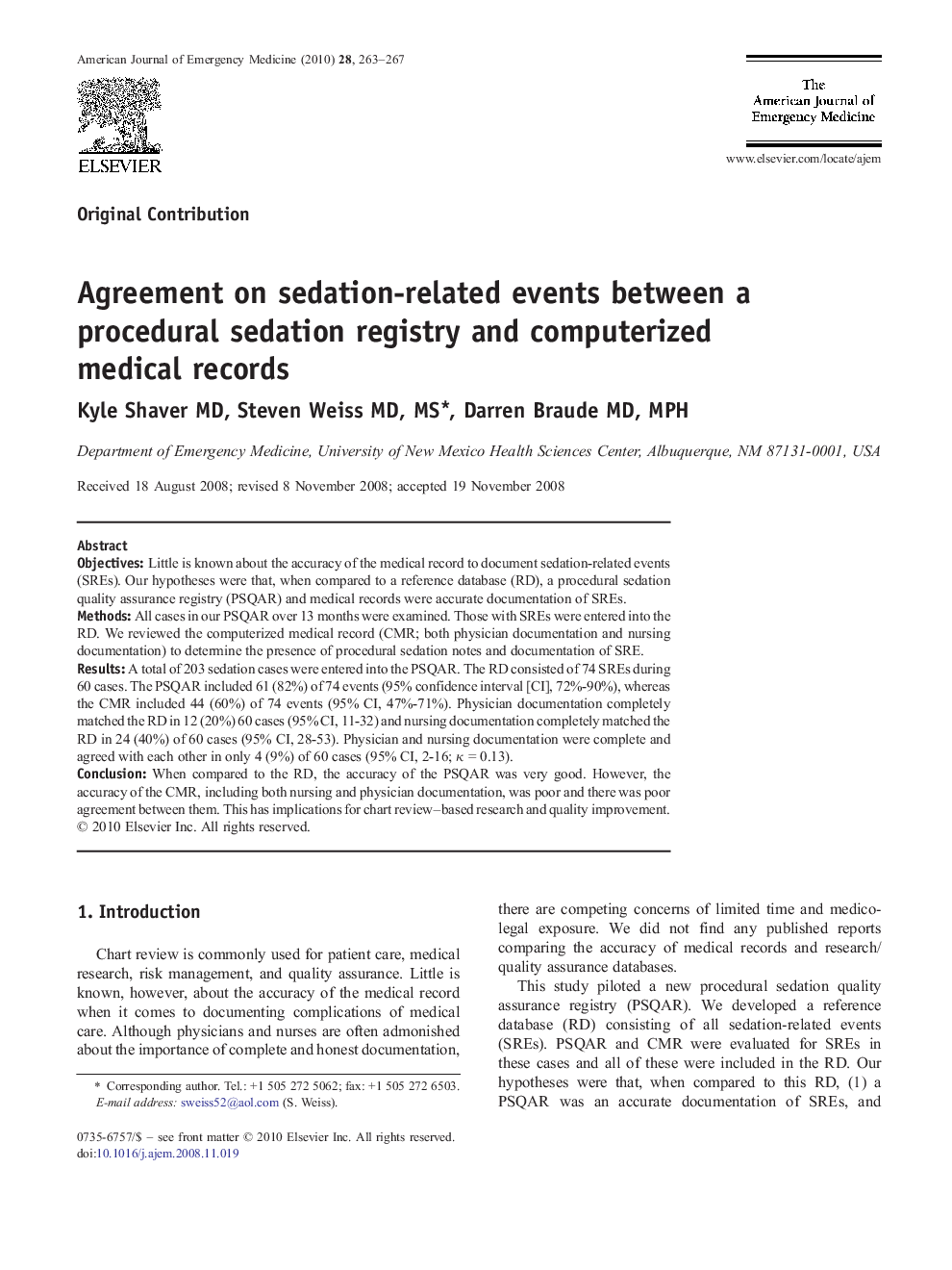| کد مقاله | کد نشریه | سال انتشار | مقاله انگلیسی | نسخه تمام متن |
|---|---|---|---|---|
| 3226234 | 1588159 | 2010 | 5 صفحه PDF | دانلود رایگان |

ObjectivesLittle is known about the accuracy of the medical record to document sedation-related events (SREs). Our hypotheses were that, when compared to a reference database (RD), a procedural sedation quality assurance registry (PSQAR) and medical records were accurate documentation of SREs.MethodsAll cases in our PSQAR over 13 months were examined. Those with SREs were entered into the RD. We reviewed the computerized medical record (CMR; both physician documentation and nursing documentation) to determine the presence of procedural sedation notes and documentation of SRE.ResultsA total of 203 sedation cases were entered into the PSQAR. The RD consisted of 74 SREs during 60 cases. The PSQAR included 61 (82%) of 74 events (95% confidence interval [CI], 72%-90%), whereas the CMR included 44 (60%) of 74 events (95% CI, 47%-71%). Physician documentation completely matched the RD in 12 (20%) 60 cases (95% CI, 11-32) and nursing documentation completely matched the RD in 24 (40%) of 60 cases (95% CI, 28-53). Physician and nursing documentation were complete and agreed with each other in only 4 (9%) of 60 cases (95% CI, 2-16; κ = 0.13).ConclusionWhen compared to the RD, the accuracy of the PSQAR was very good. However, the accuracy of the CMR, including both nursing and physician documentation, was poor and there was poor agreement between them. This has implications for chart review–based research and quality improvement.
Journal: The American Journal of Emergency Medicine - Volume 28, Issue 3, March 2010, Pages 263–267